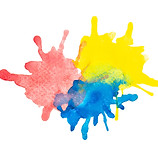
Patricia A. MacAulay
REGISTERED PSYCHOTHERAPIST


Psychosocial Development
Each child is born with unique genetic potential. Life experiences will affect how much of that potential is revealed and expressed. That is particularly true during early childhood, the most sensitive and dynamic phase of growth and learning that occurs during the human life span.
Emotional and social development is a complex and multi-layered process that is inter-woven into every aspect of the child’s life. We are vulnerable, completely dependent upon caregivers and other adults to keep us safe, respond to our needs, and encourage learning and growth.

For multiple reasons, not necessarily having to do with violent or chaotic circumstances and usually unintentional, the child’s needs may not be met fully or appropriately and/or the child may be harmed within a close relationship. This can happen even when we are in the womb.
In such scenarios, we experience gaps in our psychological and social development that make it difficult for us to meet current challenges and engage with future ones. This is not the result of a single, frightening experience, but rather an ongoing struggle to adapt to life’s demands without having fully constructed the inner resources required to do so.
This is a common occurrence, not something strange or shameful. A lot of things can impede optimal early development. However, it is only in the last few years that we truly recognize the necessity for a strong psycho-social foundation in order to meet the cognitive challenges of school-age children. We are beginning to learn how to respond to this need in non-judgmental, child-friendly ways, blending traditional knowledge with scientific exploration.
The most common framework for responding to the reality of uneven psycho-social development has been a clinical one. Upon school entry, children are usually afforded some adaptation time while being observed for any atypical behaviours and learning difficulties. Additional supports and interventions may be implemented. If those adaptations don’t enable the child to ‘’catch up,’’ then families and schools typically seek out additional expertise to name and respond to what is blocking the child’s success. The ‘’diagnose then treat’’ model tends to be the typical route for getting help to support children.
While all this is happening, though, children are having their own experiences at home, in the community, and at school that further shape learning and development, for good or for ill, and while it can be helpful to name and treat a specific condition (or cluster of conditions) experienced by a child, there is a lot that can be done to support the child without making a diagnosis.
First, we need to identify the child’s current developmental challenge. Then, we need to provide the experiences necessary to navigate that challenge within a supportive relationship. Growing up can be stressful even for children who have already successfully met their early childhood psycho-social challenges. For those who have not, the experience can be excruciating. Children in these circumstances can feel fearful, have intensely painful emotions, and lack confidence.
Pausing and working to address those realities makes more sense than forging ahead. In fact, there is emerging research showing that if we do that, we set development back even further.


